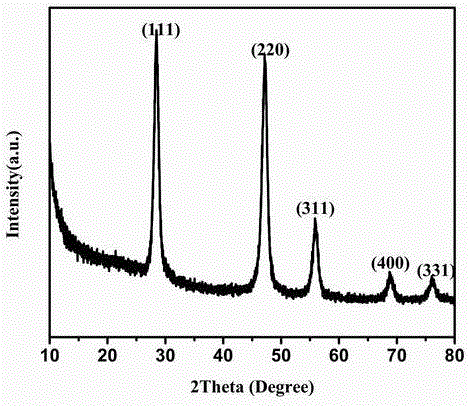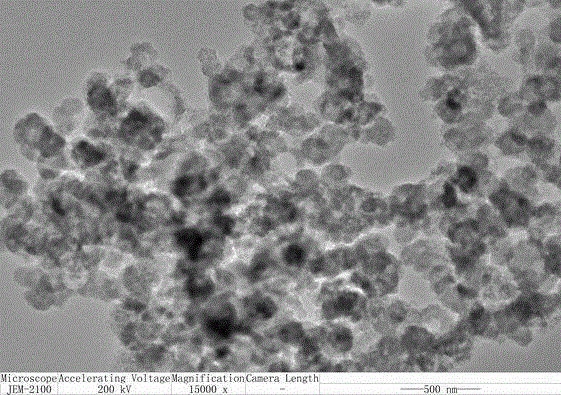Method for preparing silicon hollow nano-spheres by aid of reducing agent which is secretion of microbial cells
A technology of microbial cells and secretions, which is applied in the field of preparing hollow silicon nanospheres, to achieve the effects of good dispersion, good biocompatibility, and simple operation
- Summary
- Abstract
- Description
- Claims
- Application Information
AI Technical Summary
Problems solved by technology
Method used
Image
Examples
Embodiment 1
[0015] Inoculate Saccharomyces cerevisiae colonies in YPD medium and culture for 24 hours, centrifuge to remove cells, and obtain supernatant cell secretion; take 200mL of cell secretion, add 0.0022mol of K 2 SiF 6 , placed in a shaker at a constant temperature of 30° C. for 48 h at a shaking rate of 150 r / min, centrifuged to collect the precipitate at the bottom, washed, and dried to obtain hollow silicon nanospheres. figure 1 It is the XRD collection of illustrative plates of the silicon nanometer hollow sphere that the present embodiment makes, and it can be seen from the figure that the product obtained is consistent with the XRD collection of silicon simple substance, figure 2 It is the HRTEM image of the silicon nano-hollow spheres prepared in this example. It can be seen from the figure that the obtained elemental silicon is a hollow sphere with an average particle diameter of 200 nm.
Embodiment 2
[0017] Inoculate Brevibacterium flavum colonies in YPD medium and culture them for 24 hours, remove the cells by centrifugation, and obtain supernatant cell secretions; take 200 mL of cell secretions, add 0.0022 mol of K 2 SiF 6 , placed in a shaker at 20°C for 60 hours at a constant temperature, with a shaking rate of 100r / min, centrifuged to collect the precipitate at the bottom, washed and dried to obtain hollow silicon nanospheres with an average particle size of 200nm.
Embodiment 3
[0019] Inoculate Escherichia coli colonies in LB medium and cultivate them for 72 hours, remove the cells by centrifugation, and obtain the supernatant cell secretion; take 200 mL of the cell secretion, add 0.0022 mol of Na 2 SiO 3 , placed in a shaker at a constant temperature of 25° C. for 24 hours at a shaking rate of 200 r / min, centrifuged to collect the bottom precipitate, washed, and dried to obtain hollow silicon nanospheres with an average particle size of 200 nm.
PUM
| Property | Measurement | Unit |
|---|---|---|
| particle diameter | aaaaa | aaaaa |
| particle size | aaaaa | aaaaa |
Abstract
Description
Claims
Application Information
 Login to View More
Login to View More - R&D
- Intellectual Property
- Life Sciences
- Materials
- Tech Scout
- Unparalleled Data Quality
- Higher Quality Content
- 60% Fewer Hallucinations
Browse by: Latest US Patents, China's latest patents, Technical Efficacy Thesaurus, Application Domain, Technology Topic, Popular Technical Reports.
© 2025 PatSnap. All rights reserved.Legal|Privacy policy|Modern Slavery Act Transparency Statement|Sitemap|About US| Contact US: help@patsnap.com


